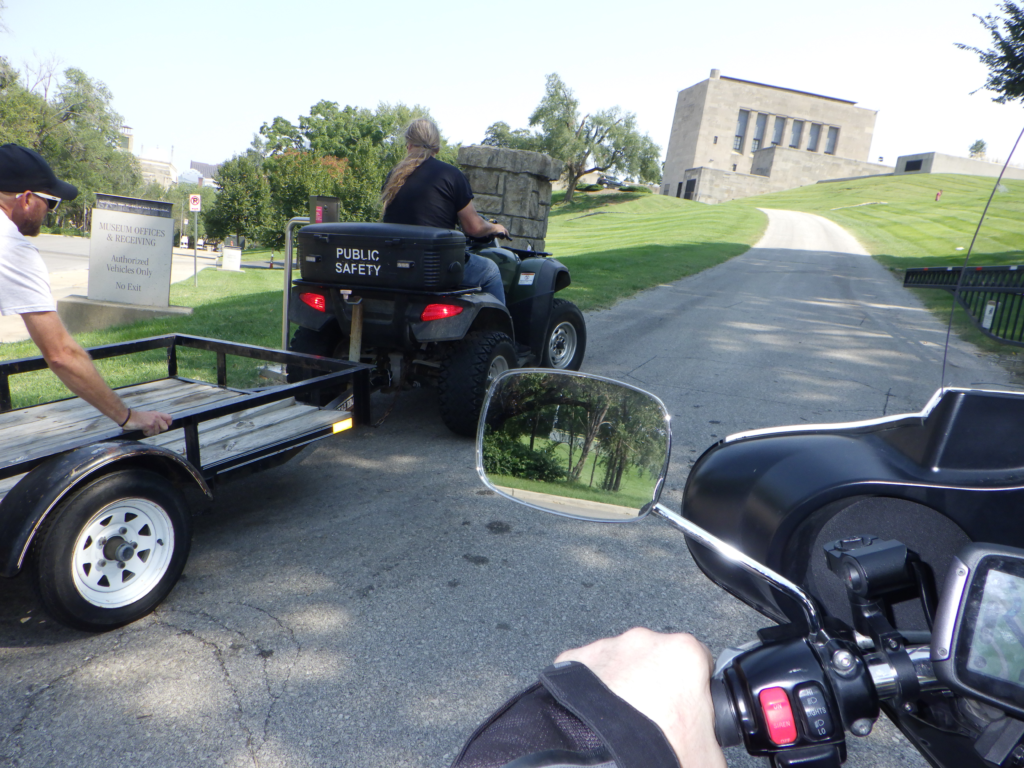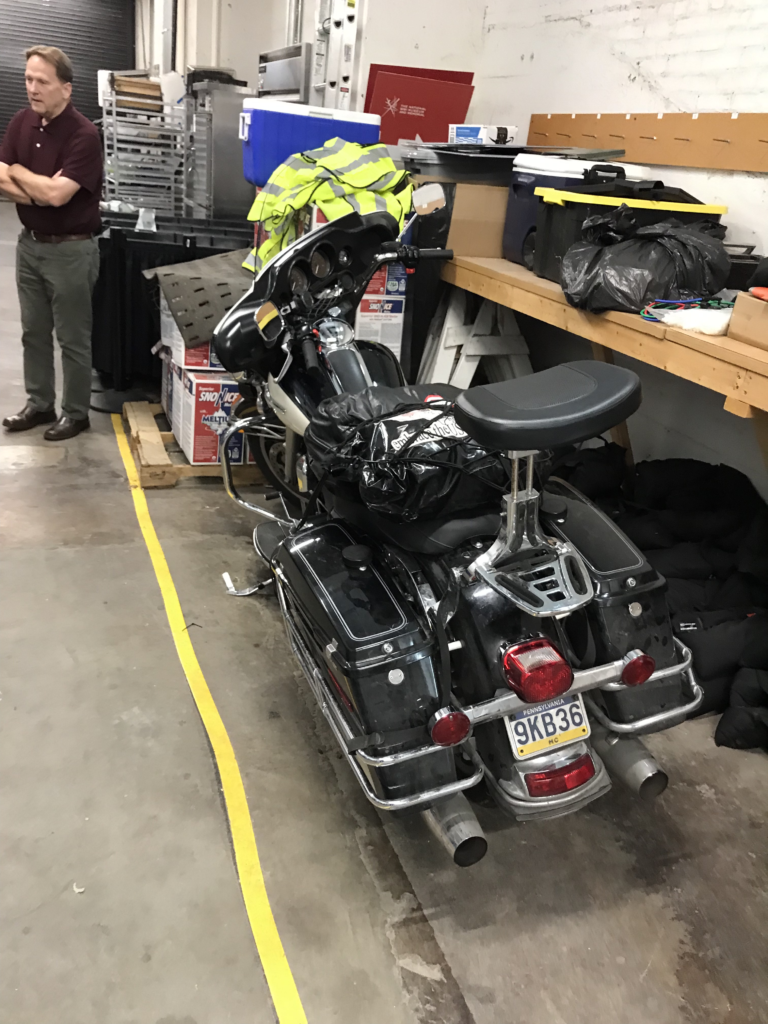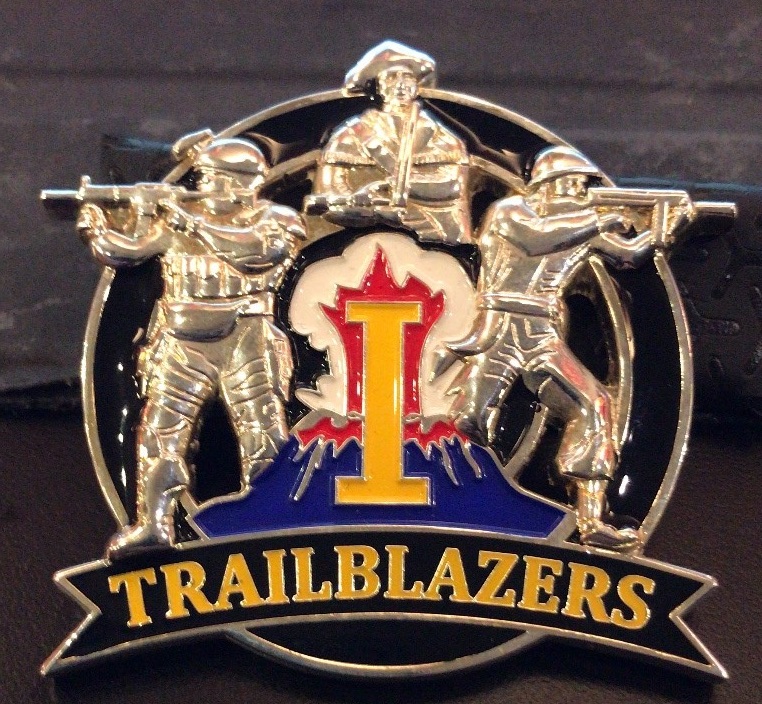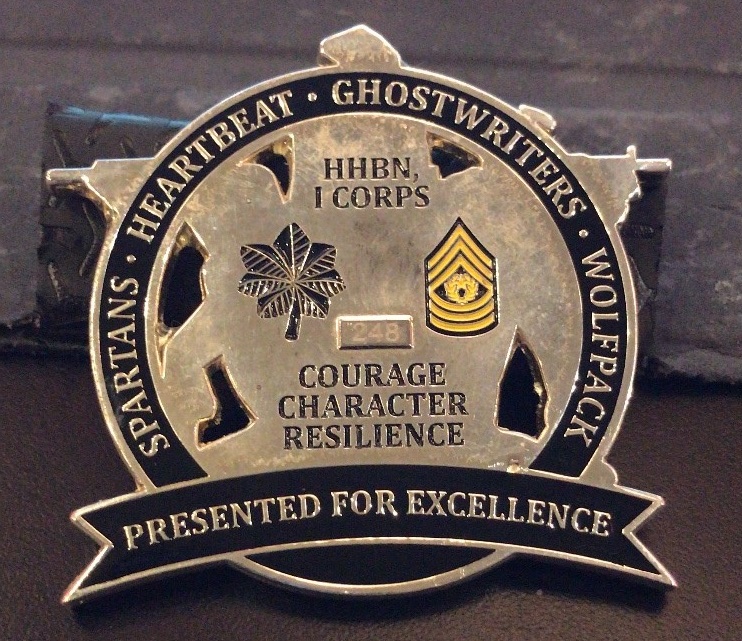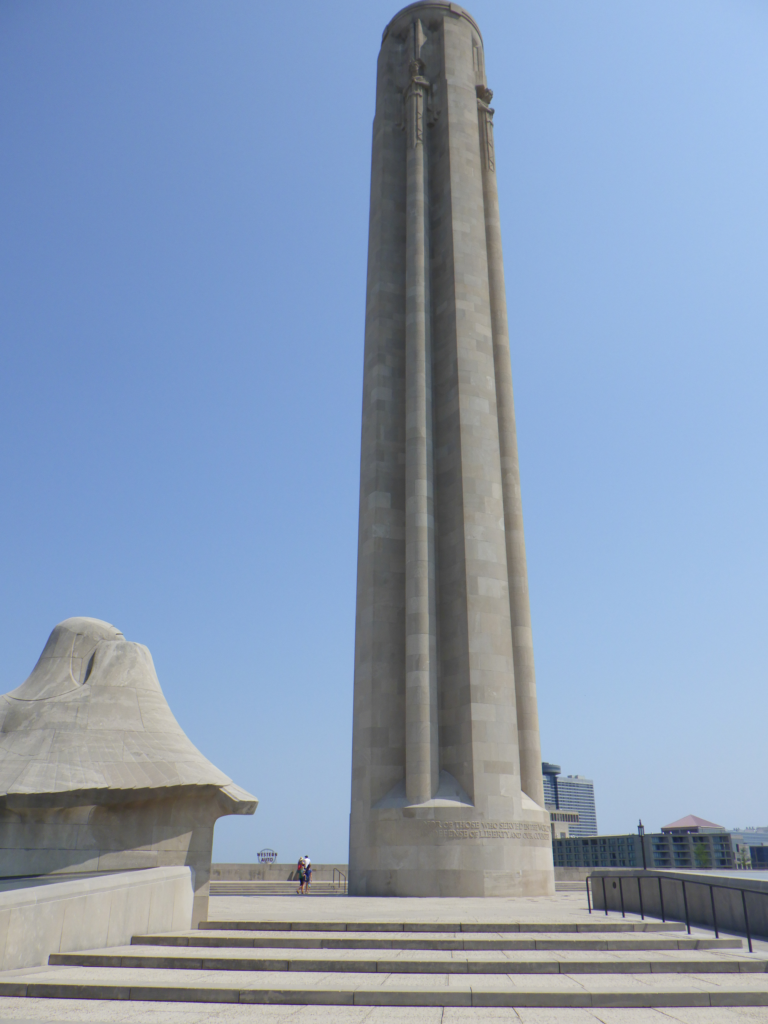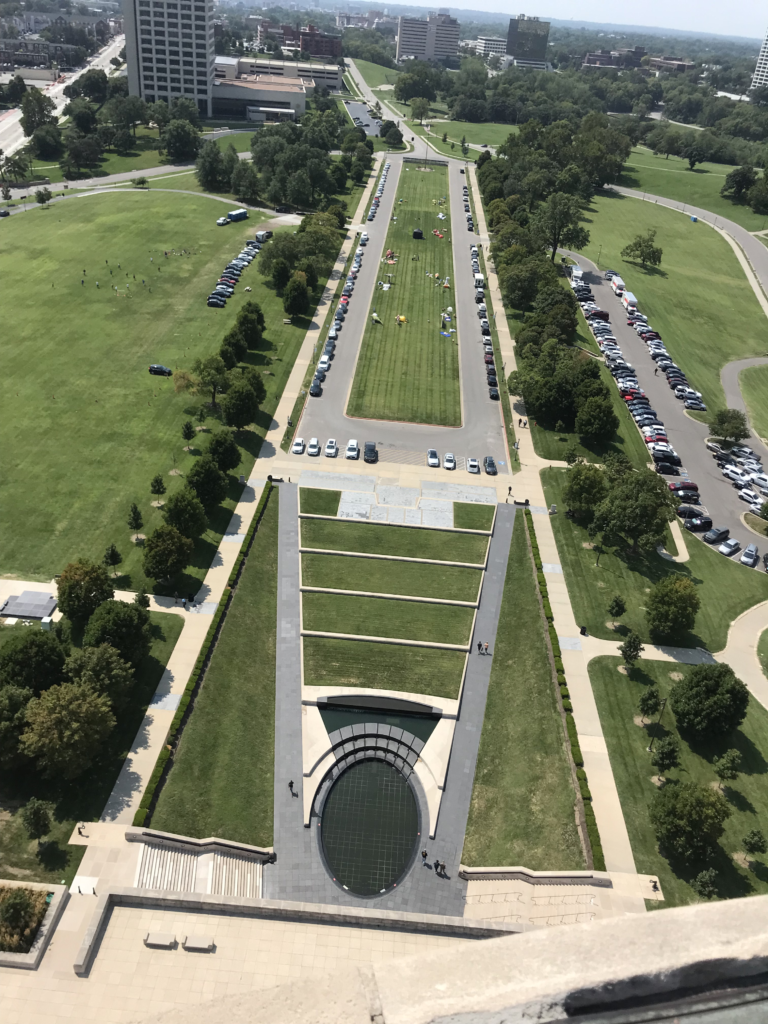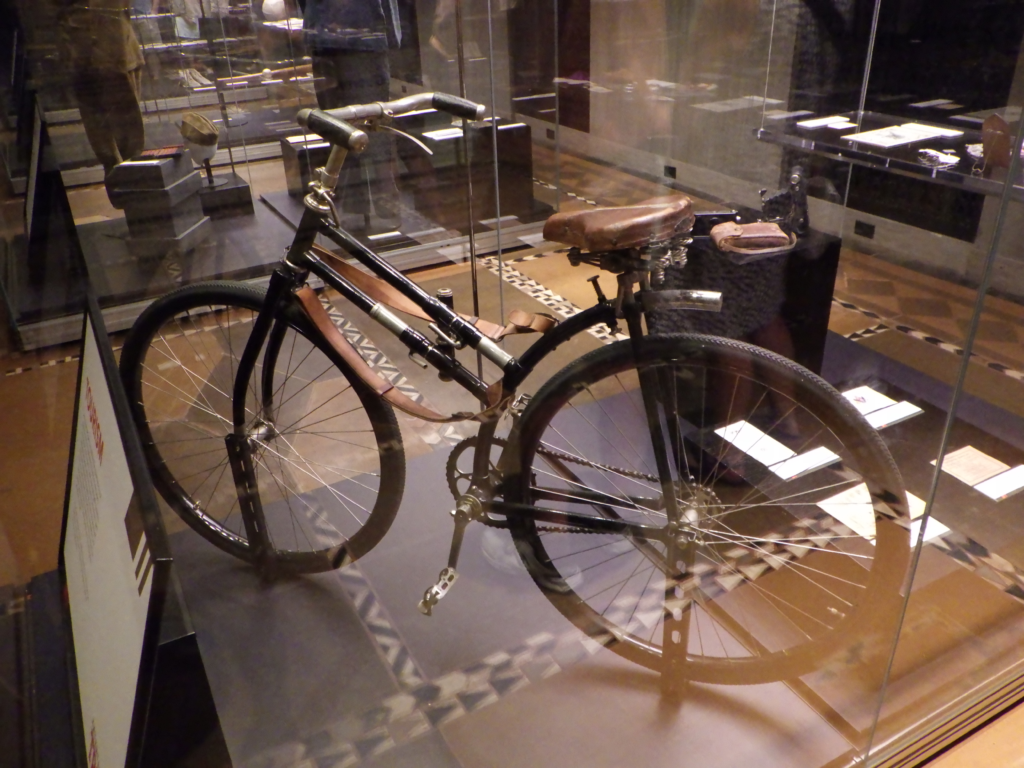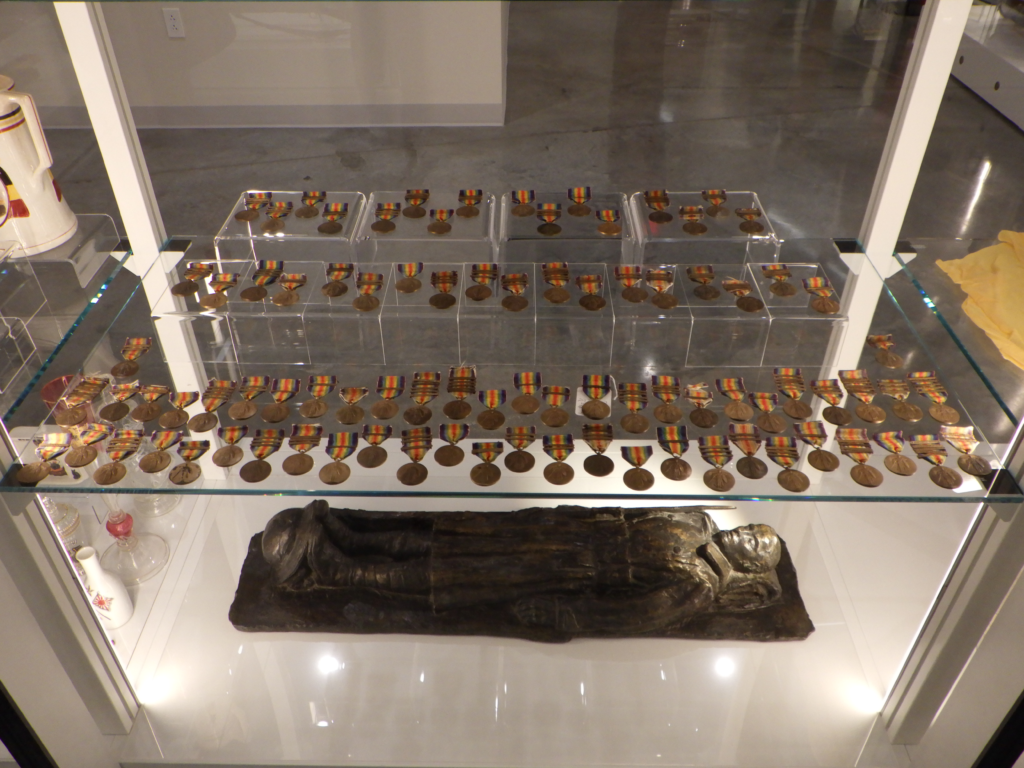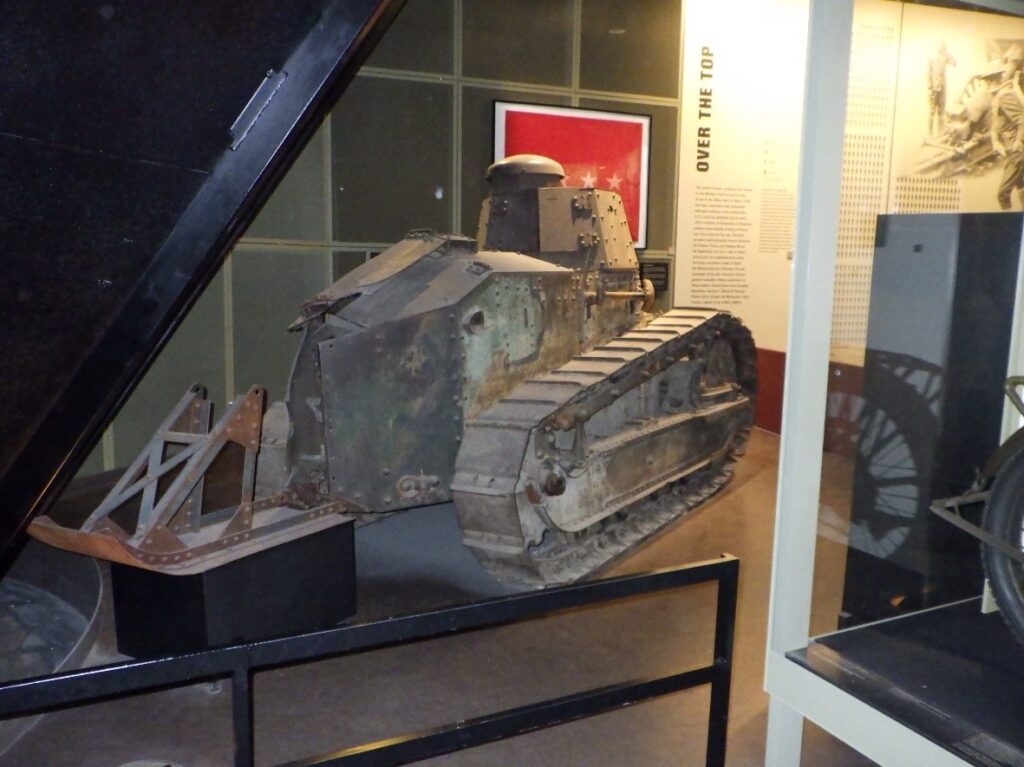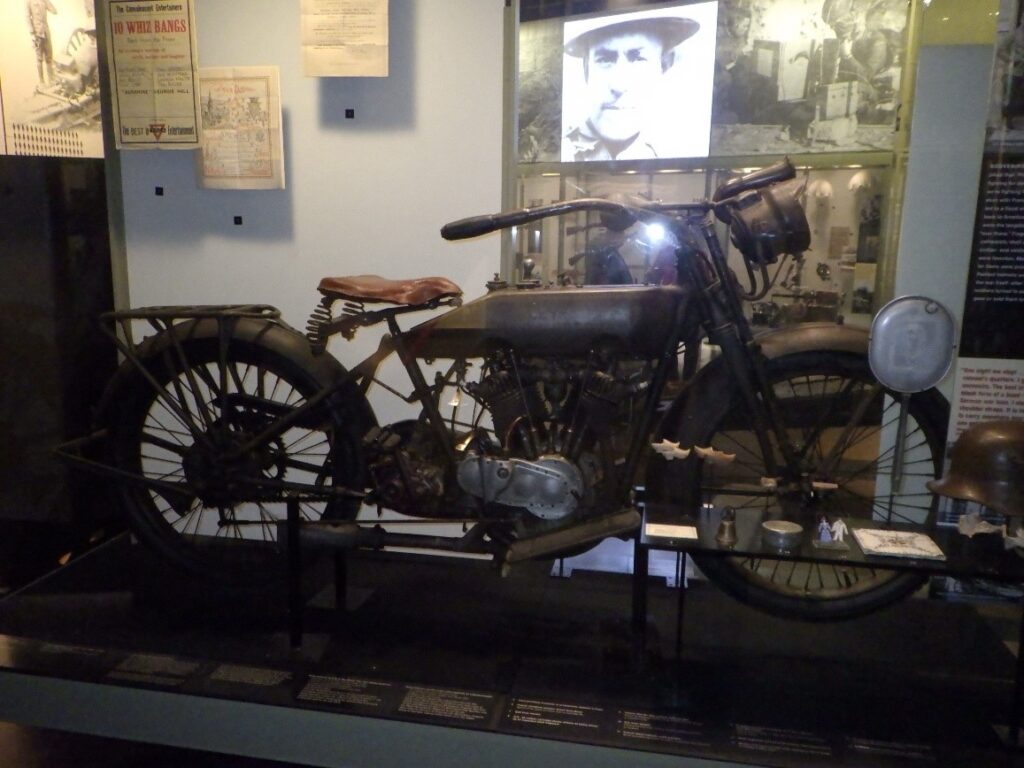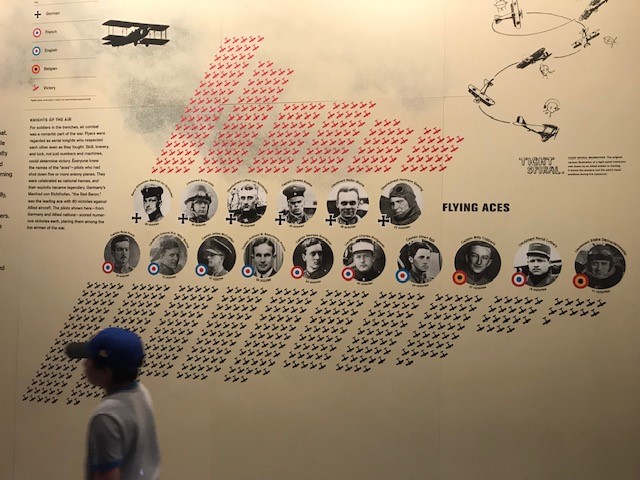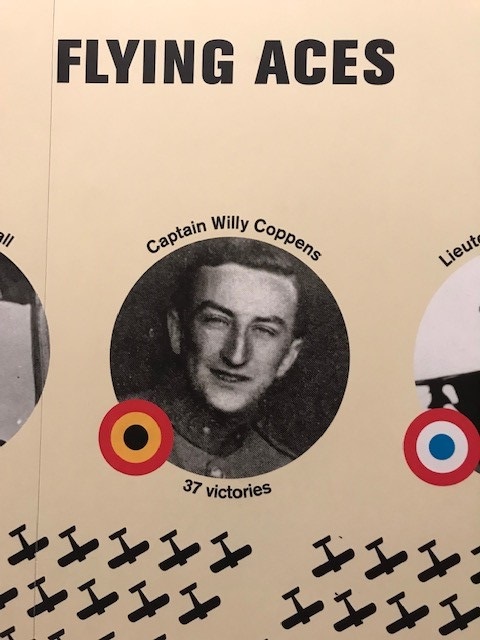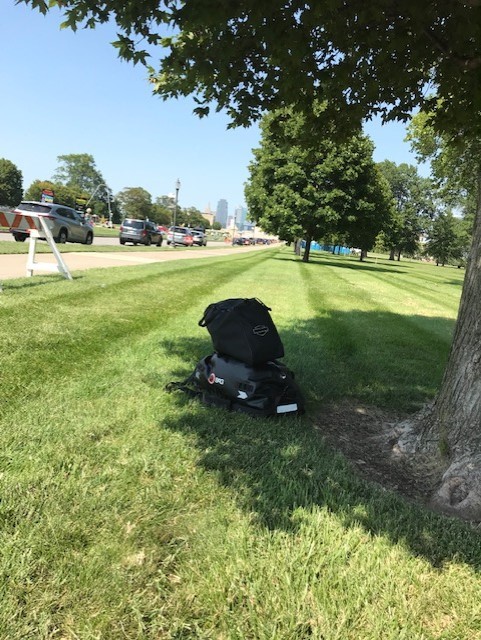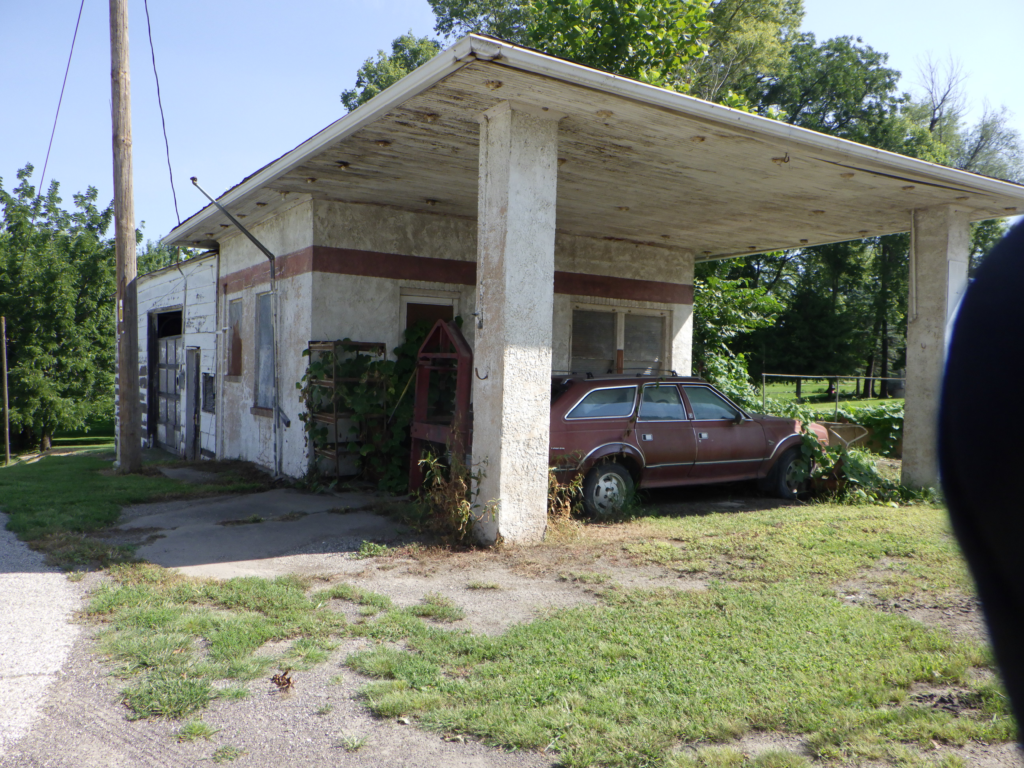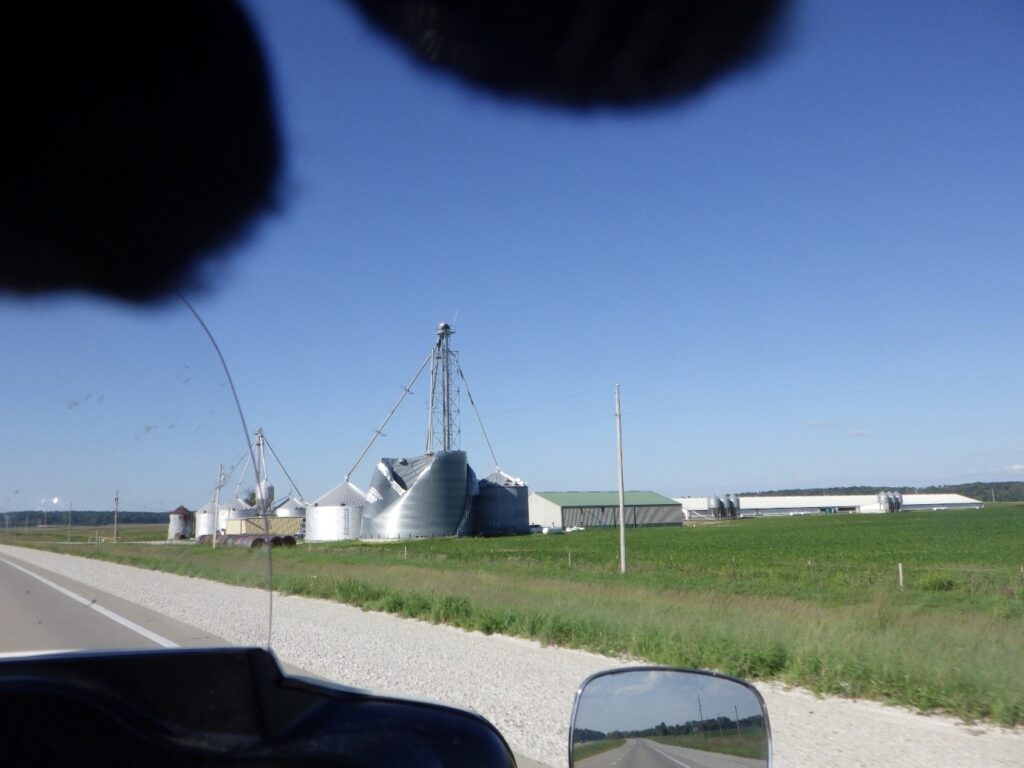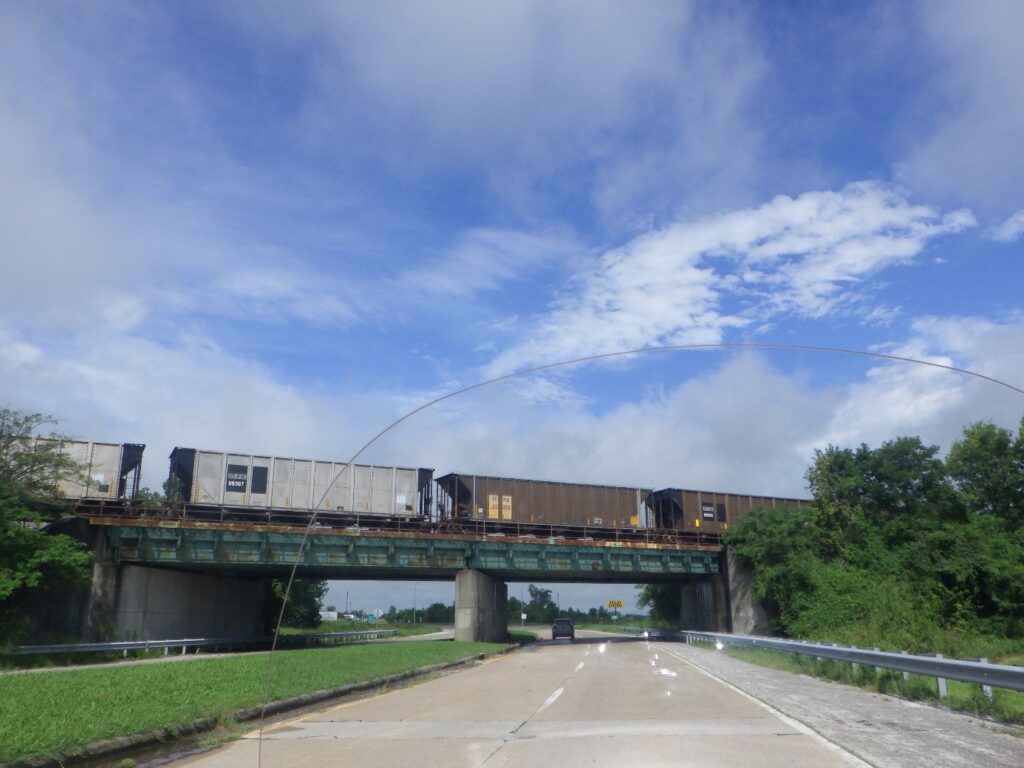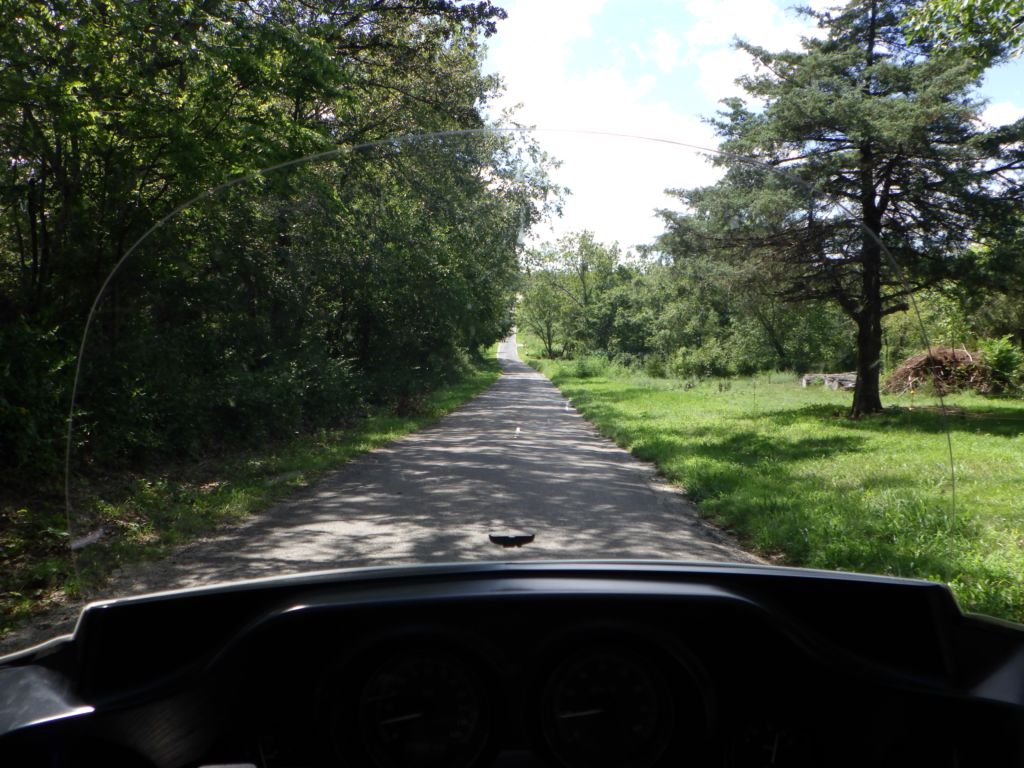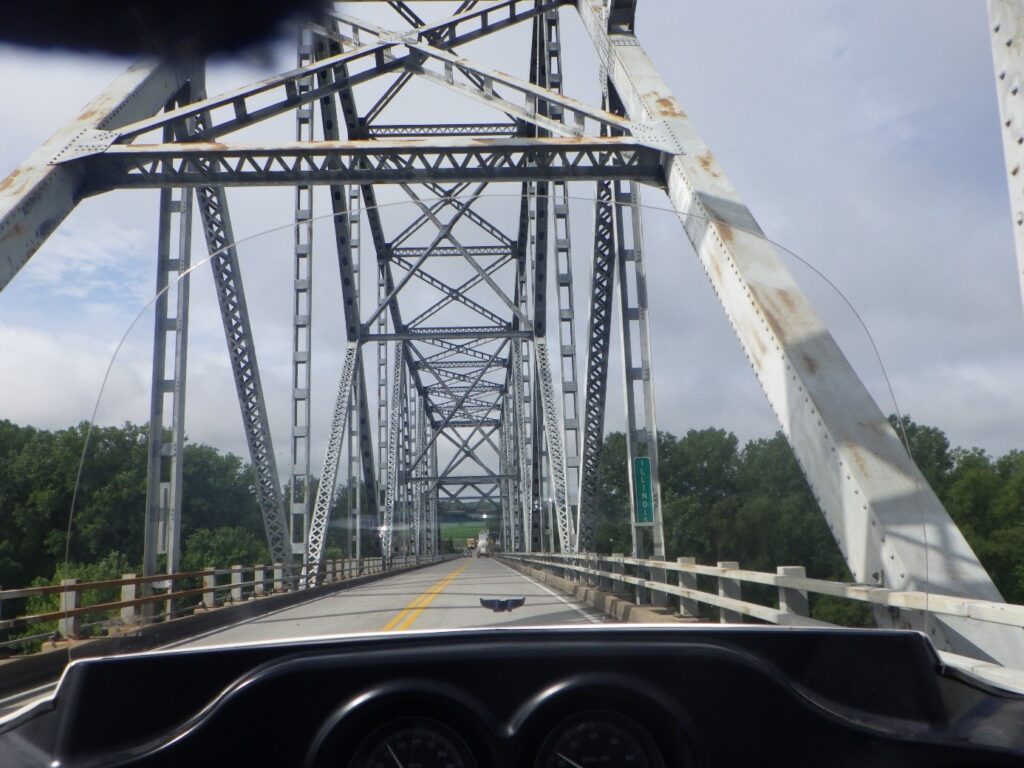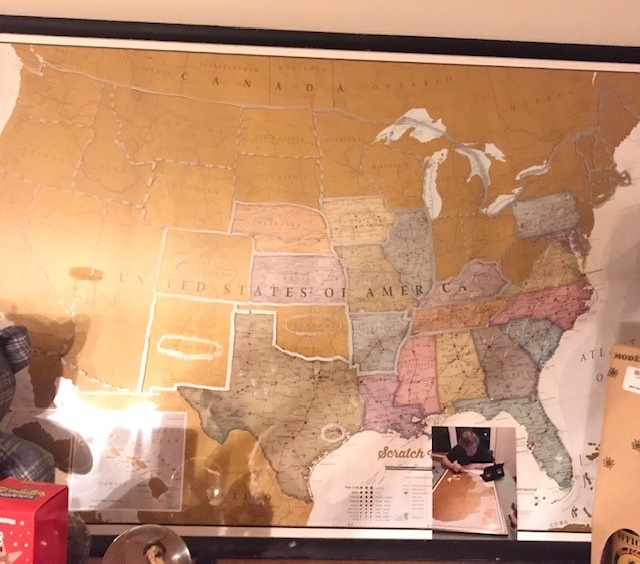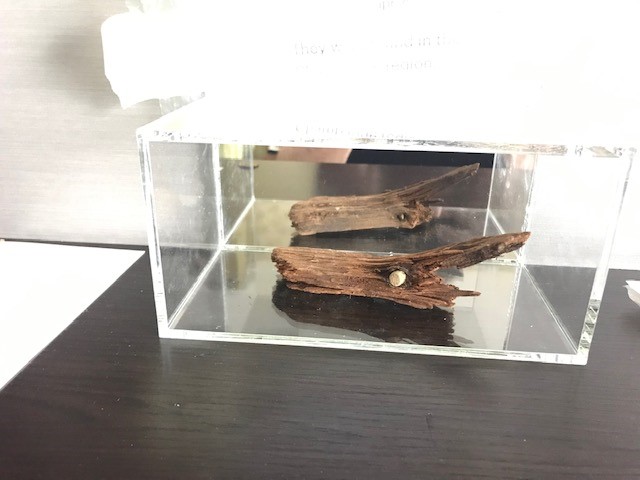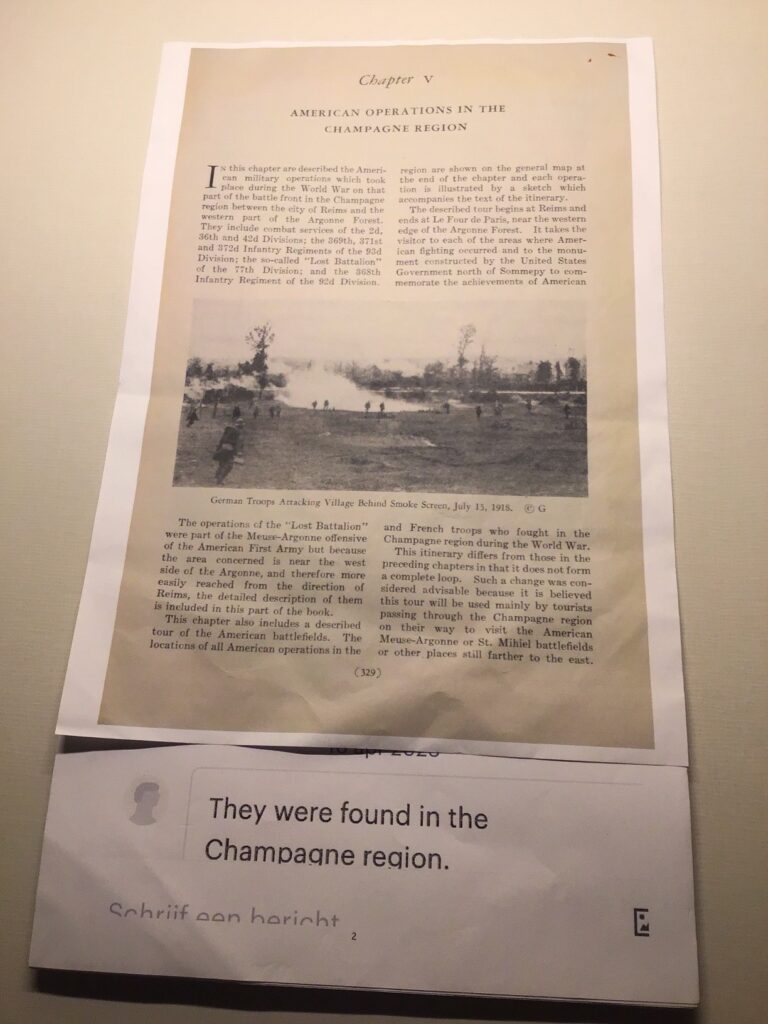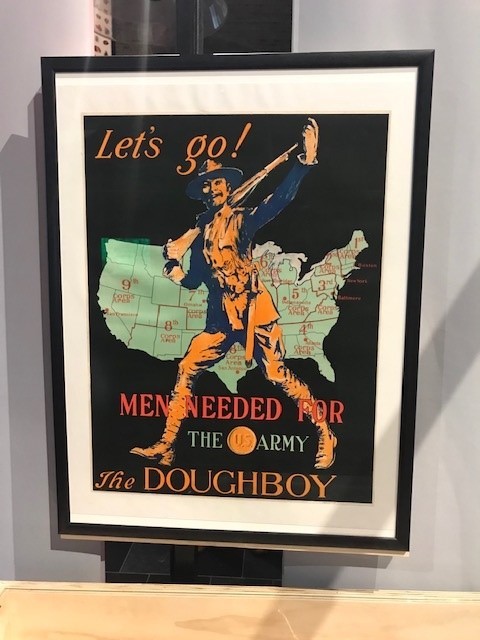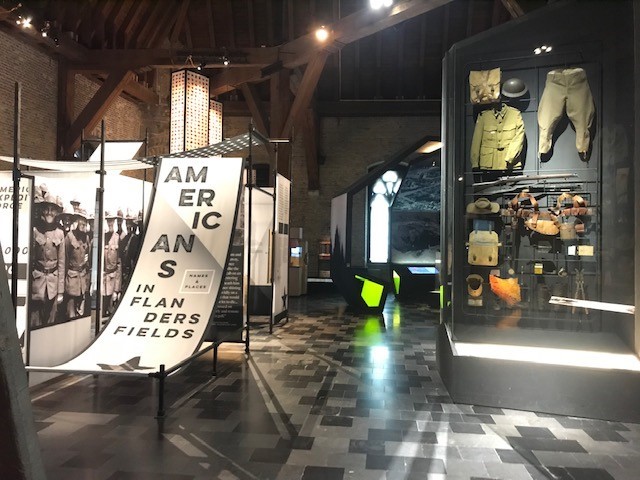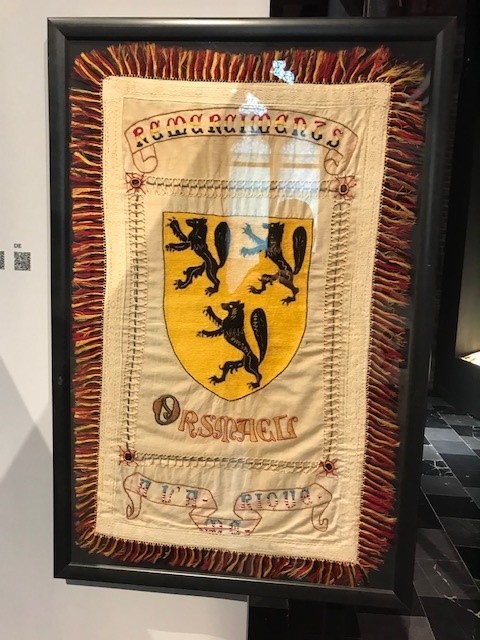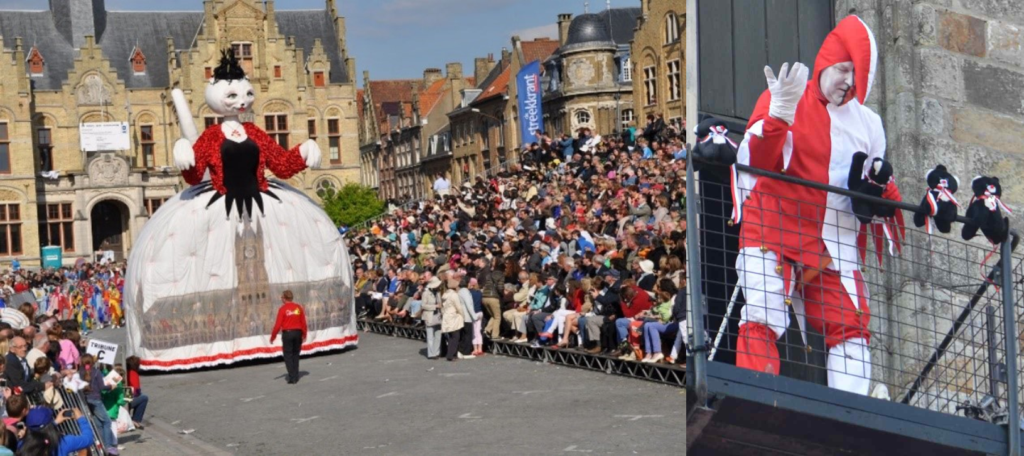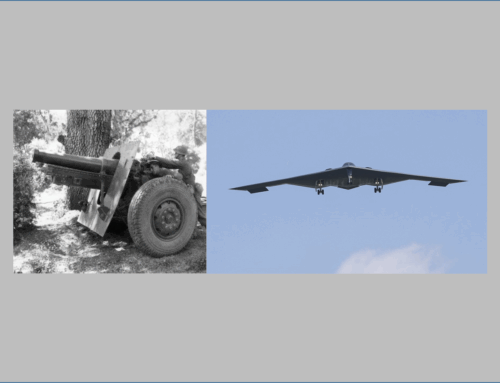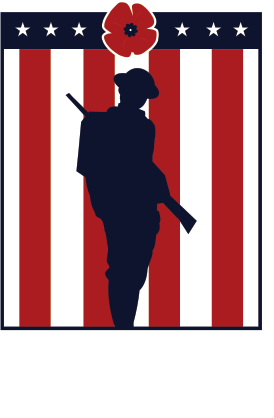Journey Log: Centennial – Fourth Ride, Part 2
Published: 24 February 2025
By John Sterkendries
Special to the Doughboy Foundation website
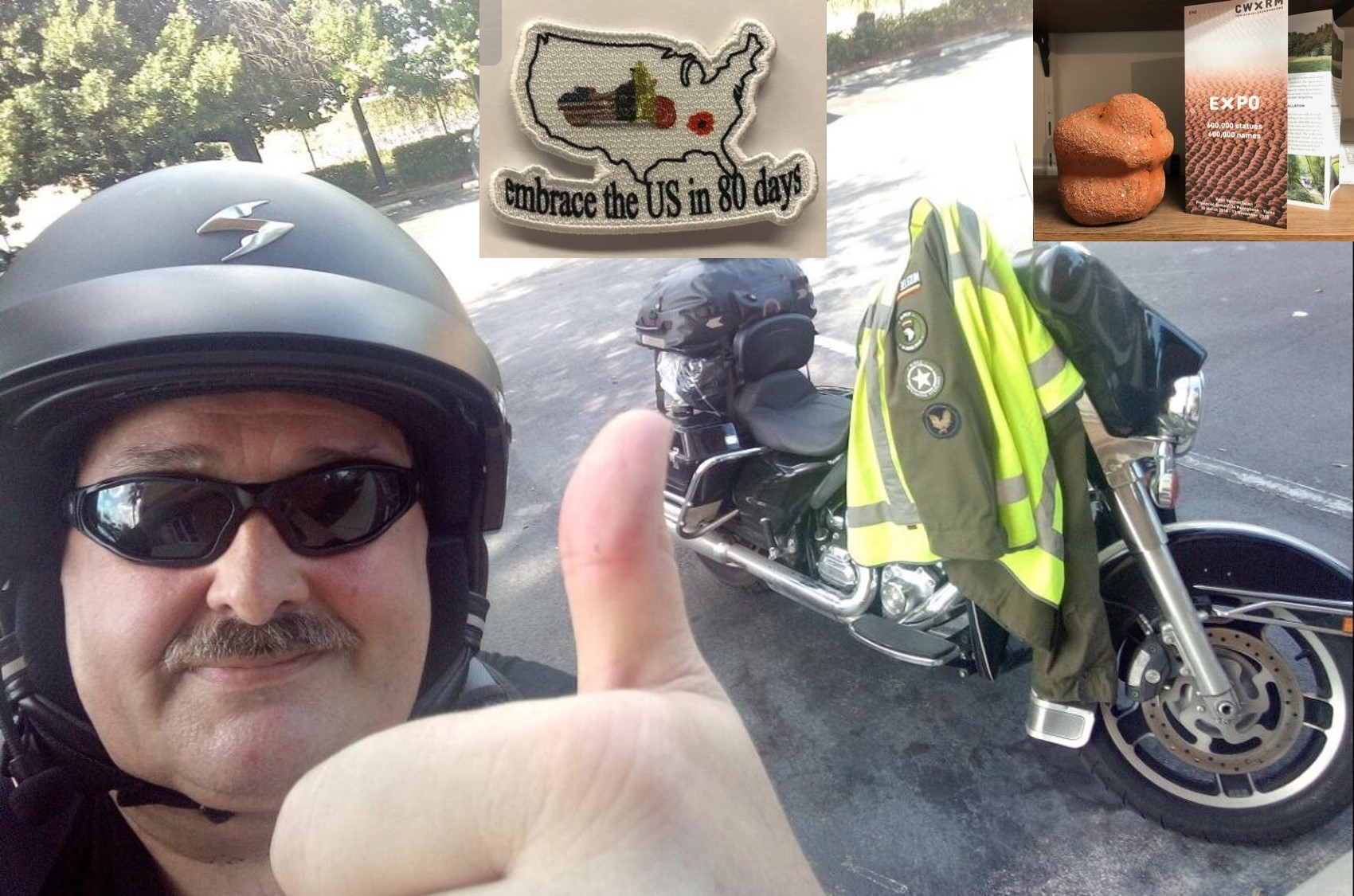
John Sterkendries motorcycle_header_photo
John Sterkendries is riding his 2013 Harley-Davidson Police Electra Glide motorcycle across the United States on a multi-year mission (top center) to find to places, monuments, and people with a relation to World War I in America to which to donate memorial clay figurines (top right) to honor American fallen soldiers. The 600,000 figurines were created to represent 600,000 victims from all countries who fell in Belgium during WWI. In this article, John provides a diary of his latest completed trips in 2023 and 2024.
(Editor’s Note: The origin and first three legs of John Sterkendries’ American WWI journeys are chronicled here and here; Part 1 of the Fourth leg can be read here. International media coverage of his project can be found here and here.)
August 2023
On my way to store my motorcycle in the storage of the National World War I Museum and Memorial until my return to the United States, to start the next leg of my journey to Houston, TX.
Mr. Mark Gunter, Vice President Of Finance (see picture above), gifted me this medal (nr° 248), stating that he believed I showed “Excellence”.
The United States army gave these medals to people who showed excellence in the following categories:
- Courage
- Character
- Resilience
I was very impressed.
Trailblazers :
The I Corps is a corps of the United States Army headquartered in Joint Base Lewis-McChord, Washington.
It is a major formation of United States Army Pacific (USARPAC) and its current mission involves administrative oversight of army units in the Asia-Pacific region, including the Pacific Pathways program.
Activated in World War I in France, the I Corps oversaw US Army divisions as they repelled several major German offensives and advanced into Germany.
The corps was deactivated following the end of the war.
Reactivated for service in World War II, the corps took command of divisions in the south Pacific, leading US and Australian Army forces as they pushed the Japanese Army out of New Guinea.
It went on to be one of the principal leading elements in the Battle of Luzon, liberating the Philippines.
It then took charge as one of the administrative headquarters in the occupation of Japan.
Deployed to Korea at the start of the Korean War, the corps was one of three corps that remained in the country for the entire US participation in the conflict, commanding US, British, and South Korean forces through three years of back-and-forth campaigns against North Korean and Chinese forces.
Following the end of the war, it remained in Korea for almost 20 years guarding the Korean Demilitarized Zone.
Active today, the corps acts as a subordinate headquarters of United States Army Pacific, and has also seen deployments in support of Operation Iraqi Freedom and Operation Enduring Freedom.
World War I
Following the American declaration of war on Germany, on 6 April 1917, the I Corps was organized and activated on 15–20 January 1918, in the National Army in Neufchâteau, France, the first of several corps-sized formations intended to command divisions of the American Expeditionary Forces in Europe during World War I.
Assisted by the French XXXII Corps, the headquarters was organized and trained; on 20 January, Major General Hunter Liggett took command
In February, the corps consisted of the 1st, 2nd, 26th, 32nd, 41st, and 42nd Infantry Divisions. From February to July, 1918, the German Army launched four major offensives, attempting to secure victory before the full American forces could be mobilized.
The final offensive, started in July 1918, was an attempt to cross the Marne, in the area of Château-Thierry, but the I Corps and other formations on the American lines held, and the attack was rebuffed.
With the defeat of these German drives, the I Corps conducted its first offensive mission, participating in the Second Battle of the Marne from 18 July until 6 August, which resulted in the reduction of the more important salients driven into Allied lines by the German offensives.
After a brief period in the defensive sectors of Champagne and Lorraine between 7 August and 11 September, the corps took part in the St. Mihiel attack on 12 September, which reduced the German salient there during the next four days.
Then followed another period on the defense in Lorraine as preparations advanced for what was to be the final Allied offensive of the war. On 26 September, I Corps troops began the attack northward that opened the Meuse-Argonne Offensive. From that day until 11 November 1918 when the war ended, the I Corps was constantly moving forward.
The I Corps shoulder sleeve insignia was first worn by members of I Corps after approval from the AEF on 3 December 1918, but it was not officially approved until 1922.
The I Corps continued to train in France, until it was demobilized on 25 March 1919.
| Conflict | Streamer | Year(s) |
| World War I | Champagne-Marne | 1917 |
| World War I | Aisne-Marne | 1917 |
| World War I | St. Mihiel | 1917 |
| World War I | Meuse-Argonne | 1917 |
| World War I | Ile de France | 1918 |
| World War I | Champagne | 1918 |
| World War I | Lorraine | 1918 |
The National World War I Museum and Memorial in Kansas City is a beautiful and extensive museum.
This is the same type of bicycle my wife’s grandfather used at the fronts in 1914. He was a Black Devil. Please take a look on my website: www.embracetheusin80days.com to learn more about him.
My wife’s grandfather received a lot of these medals shown above.
Using a motorcycle like the one above on my 25,000km. journey would certainly be a whole different operation.
Willy Coppens is a Belgian pilot “Flying Ace.” Please take a look on my website: www.embracetheusin80days.com (Story 2).
Here I am waiting on my Uber to the airport to make my way back to Pittsburgh. I’ll be spending a few more days with my daughter there before flying back to Europe.
The following are all pictures of places in the United States that may seem normal to local residents, but genuinely impress anyone from Belgium.
This is a scratch-off map of the United States that I have proudly displayed in my home. After each trip, I get to reveal every state I’ve seen.
Coincidentally, I found a piece of wood from a WWI French trench on the internet, which has a bullet in it. I made a little display for it and gave it as a gift to a good friend…
The beer shown below comes from the Bastogne region of Belgium, where the battle of the Bulge occurred in December 1944.
December 2023
In between the moment I created a display stand for the statue, and the moment I donated it at the WWI Museum in Kansas City, MO, there were:
- 8 Flights
- 9 Overnight stays
- A 3000 km motorcycle ride to Kansas City, MO
- This journey would end with a 2200 km ride back to Houston, TX in middle 2024.
In December 2023, my wife and I spent a few days in Pittsburgh with our daughter to celebrate the holidays.
Sometime before, I had received a message that the WW1 Museum in Kansas City, MO would be carrying out renovations, and that my motorcycle had to be moved.
I told them that I would do my next trip from Kansas City back to Houston in June, and planned to then continue my originally planned trip around the outside of the U.S. (This trip from Houston, TX to Kansas City, MO to the WWI Museum and back to Houston, TX is an exception to my planned trip, just to donate a statue at the museum)
I contacted the museum several times by email, asking if I should move my motorcycle to storage when I would be in Pittsburgh in December.
I would then take a flight from Pittsburgh to Kansas City, MO, rent a storage locker, and move my motorcycle.
But I unfortunately received no response to any of my correspondence.
After coming back to Belgium, I received an email from the museum indicating that they hadn’t seen any of my emails due to crowds and that I would still have to move my motorcycle.
April 2024
So, in April of 2024, I flew to Pittsburgh and drove over 1400km with my daughter to Kansas City, MO with the sole purpose of moving my motorcycle.
The person in charge was not in that day, and an employee helped me pick up my motorcycle.
My motorcycle was no longer where I left it, but had already been moved to the basement. The employees were confused, indicating that, because the motorcycle was already moved to the basement, there was no need to move it off-site anymore.
Regardless, I rented a storage unit in the city, moved my motorcycle and we drove 1400km back to Pittsburgh.
After two more days in Pittsburgh, I took a flight back to Belgium.
(€3000.00 and a week on the road.?)
It’s unfortunate that some organizations and people are not really or aware of the size/costs and difficulty of this journey.
This journey that I have been undertaking, planning and paying privately from Belgium Europe for a number of years to donate statuettes to the right place.
May 2024
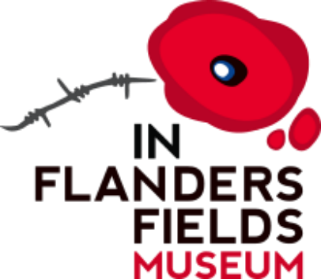 On Thursday, May 9 2024, my wife Christel and I drove to the In Flanders Fields Museum.
On Thursday, May 9 2024, my wife Christel and I drove to the In Flanders Fields Museum.
We visited the exhibition Americans in Flanders Fields.
Here you will discover, if you didn’t already know, that the help we received from our American friends made the necessary difference we needed in defeating the German occupation.
It is a 250km there and a 250km. return trip, but it’s definitely worth it.
AMERICANS IN FLANDERS FIELDS
This exhibit highlights the presence of Americans in Belgium during the First World War, before and after the official US participation in the war.
From the outbreak of the war, there was a lot of sympathy for ‘Poor Little Belgium’.
This led to all kinds of initiatives in America to provide assistance to the Belgian civilian population.
Soon American citizens also enlisted in Allied armies to contribute to the front.
After the declaration of war on Germany in April 1917, the American army was organized, trained, and brought to Europe.
The arrival of the Americans definitely tipped the balance in favor of the Allies.
During the summer and autumn of 1918, four American divisions also fought at the front in Flanders.
This exhibition is part of the project “Americans in Flanders Fields”, Names and Places 1917-1919, a collaboration between the museum, Smithsonian Institution (Washington, DC) and the embassy of the United States of America in Belgium.
During the First World War, Belgian girls, women and artists decorated flower bags with embroidery, paintings and bobbin lace for charitable work and in gratitude for food supplies.
They also made clothing from it.
Although only a fraction of grain imports arrived in Belgium in ‘American flour bags’, the bags remain the symbol of the complete food supply during the Great War to this day.
That’s why decorated flour sacks have a mythical history more than a hundred years later.
It was very busy because that weekend, as there was also the famous Cat Parade/festival.
In addition to the City of Peace, Ypres is also called the Cat City.
Every 3 years, tens of thousands of people come to watch.
The Cat Parade is a triennial procession in Ypres where, as the name suggests, the cat takes center stage.
A not implausible hypothesis as to why cats are so popular in Ypres is that they were used to catch the mice and rats that feasted on the wool and cloth stored in the halls.
After the procession, the city jester throws plush cats from the belfry to the crowd below, who are eagerly waiting to catch them on the Grote Market.
I would like to thank Wesley Butstraen of the tourism department for the interest he shows in my American trip.
When visiting the Museum in Ypres, there was a folder at the entrance with leaflets and bracelets from the museum.
I give these bracelets to members of posts of the American Legion or VFW posts that I visit in the evening and where I eat, drink and relax.
These are very appreciated.
It is because of these people such as Chris Christopher, Dan Dayton, veterans and members of American Legions and VFW posts, Wesley Butstraen, people I have already mentioned or will mention in my stories, and many others that this journey also has many pleasant moments.
I am looking forward to the next leg of this journey!
Thank you,
John
External Web Site Notice: This page contains information directly presented from an external source. The terms and conditions of this page may not be the same as those of this website. Click here to read the full disclaimer notice for external web sites. Thank you.
